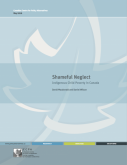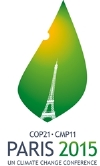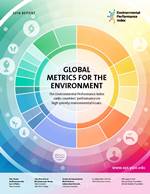Published on Fri, 2016-05-20 10:23
Canadian Centre for Policy Alternatives (CCPA) launches the report "Shameful Neglect: Indigenous Child Poverty in Canada". The report calculates child poverty rates in Canada, and includes the rates on reserves and in territories—something never before examined. The report also disaggregates the statistics and identifies three tiers of poverty for children in Canada, finding the worst poverty experienced by status First Nation children (51%, rising to 60% for children on reserve). The second tier encompasses other Indigenous children and disadvantaged groups (ranging from 22-32%), and the third tier consists of children who are non-Indigenous, non-racialized and non-immigrant, where the rate of 13% is similar to the OECD average. |
Published on Fri, 2016-05-20 09:59
The first inter-sessional meeting of the United Nations Framework Convention on Climate Change (UNFCCC) after the adoption of the Paris Agreement at the 21st Conference of the Parties (COP21) in Paris last year, opened in Bonn on 16 May. H. E. Mr. Manasvi Srisodapol of Thailand, the Special Representative of the Chair of the Group of 77 and China on Climate Change, speaking for the Group said as Parties move into the implementation of the Paris Agreement, the delicate balance of all issues achieved in Paris as well as the principles and provisions of the Convention must be preserved. |
Published on Fri, 2016-05-13 10:31
"The growing inequality in the world is perhaps the single most imposing barrier to achieving the Sustainable Development Goals (SDGs) laid out by the 2030 Agenda" say the international trade unions in a document addressed to the United Nations. The representatives of the workers argue that "the deepening of inequality has been accompanied by an erosion of labour institutions" and defend social dialogue as helpful to reverse this trend and tackle inequality. "Leaving no one behind" means tackling inequality, says the submission by the Worker and Trade Union Major Group to the High Level Political Forum (HLPF). |
Published on Fri, 2016-05-13 10:05
The work of central banks is not easily understood and often takes place out of direct public view. Equipped with traditional macroeconomic tools of the trade, central bankers fulfil their main function – to keep prices stable by fighting inflation – through regulation of money supply and interest rates. In addition to this monetary function, some (but not all) central banks are also involved in regulating or supervising the financial sector to ensure the health of financial institutions. In the aftermath of the global financial crisis, central bank participation in sovereign debt rescheduling and support for the stability of the broader financial system is coming into sharper focus. Depending on the mandate, central banks take on other non-monetary functions as well, such as promotion of economic development, job creation, and financial inclusion. Central banks in developing countries that come under the direct influence of the executive branch (which also raises legitimate questions concerning their independence) tend to make active and creative use of non-monetary functions in ways that can directly benefit individuals and households. |
Published on Mon, 2016-05-09 11:57
An “Environmental Performance Index” to be launched on May 9 at the UN claims to align itself with the Sustainable Development Goals (SDGs) but actually hides the impact of unsustainable consumption and production patterns in the North as well as the contributions of the Global South to achieving the internationally agreed targets. The EPI (available here), now in its 10th edition, is authored by the Yale Center for Environmental Law and Policy, in collaboration with the World Economic Forum (Davos). This year’s report claims to have a “parallel approach” to the internationally agreed SDGs in its “use of quantitative metrics to evaluate policy performance” and maintains that “aligning EPI’s indicators with the SDGs provides a baseline for evaluating national performance and shows how far countries are from reaching global targets”. |
SUSCRIBE TO OUR NEWSLETTER







